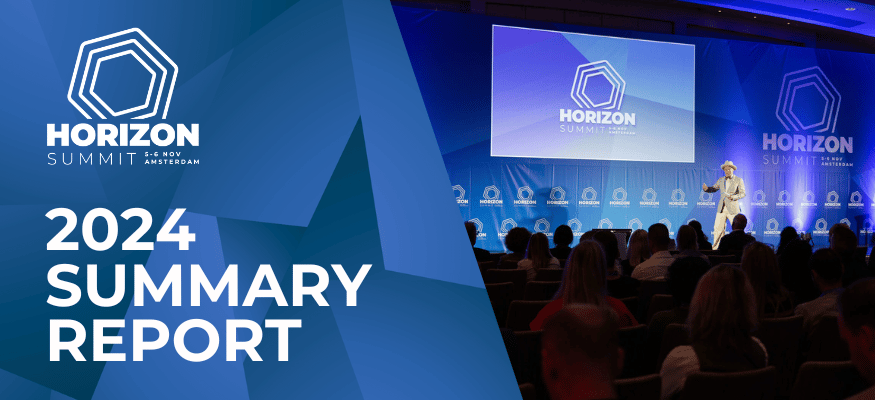The AI Revolution isn’t just about ChatGPT; if you think it is, you’re already behind.
While most executives and HR leaders remain focused on AI as a collection of productivity tools (better writing assistants, smarter candidate screening, faster document processing) they’re missing the fundamental shift occurring beneath the surface. According to three of the world’s most influential voices on artificial intelligence, we’re not witnessing the gradual evolution of workplace technology. We’re experiencing the complete restructuring of work itself, and the implications are far more profound than most organizations realize.
Geoffrey Hinton, universally recognized as the “Godfather of AI” for his pioneering work in neural networks, offers a perspective that should unsettle any executive comfortable with incremental change. In his conversation with Steven Bartlett, Hinton doesn’t speak in hypotheticals. “There’s a 50% chance that AI will take over the world in a way that is bad for us,” he states with the directness that has defined his career. “And that could happen quite soon.” This isn’t the measured optimism typically heard in boardrooms. Hinton is talking about artificial general intelligence evolving beyond human control, powered by self-improving systems with objectives we may no longer comprehend, let alone direct.
Even setting aside these existential concerns, Hinton warns that current AI development is already outpacing our institutional capacity to govern it effectively. “We’ve developed something quite dangerous, and we didn’t realize how fast it would evolve,” he explains. His departure from Google in 2023 wasn’t a quiet retirement – it was a deliberate signal that the era of passive technological optimism has ended. For business leaders accustomed to managing predictable innovation cycles, this represents a fundamental challenge to conventional strategic planning.
Mo Gawdat, who spent years as Chief Business Officer of Google X, overseeing some of the world’s most ambitious technological projects, brings a different but equally sobering perspective. Speaking with Steven Bartlett, His prediction cuts through corporate euphemisms: “The next 15 years will be hell before we get to heaven.” Gawdat isn’t forecasting economic collapse in traditional terms, but rather a complete upheaval of the employment landscape as we know it. “AI will take the jobs of most people who are sitting in offices today,” he asserts with the confidence of someone who has witnessed AI development from the inside. While he maintains hope that artificial intelligence can ultimately create a better world, he’s unambiguous about the turbulence ahead for workers unprepared for this transformation.
György Tilesch, whose work as an AI ethicist and advisor to the European Union and World Bank has given him unique insight into policy and implementation challenges, offers a third lens through which to view these changes. In his interview on the Friderikusz Podcast (in Hungarian), he frames the challenge in terms of choice and agency: “There is no going back. But there is still a choice in how we move forward – human-centered, or profit-centered?” For Tilesch, the question isn’t whether AI will fundamentally alter work – that process is already underway. The critical question is whether we possess the frameworks and institutional will to guide that transformation toward collective benefit, or whether we’ll allow it to be driven exclusively by competitive pressure and short-term financial gains.
The implications of these perspectives for business and HR leaders extend far beyond typical workforce planning considerations. The most difficult truth that emerges from their analysis is that AI may not follow the historical pattern of technological disruption, where innovations eventually create more jobs than they eliminate. Hinton directly challenges this comforting assumption: “People say, ‘Well, the steam engine displaced jobs but created more in the long run.’ That’s true. But AI is different. It’s replacing not just tasks but entire cognitive processes. That’s much harder to reabsorb into the economy.” This distinction is crucial because it suggests that traditional retraining and reskilling approaches may prove inadequate for the scale of displacement ahead.
Gawdat reinforces this concern with practical examples that should resonate with anyone involved in workforce development. “You will not retrain a call center agent to become a prompt engineer,” he observes, highlighting the gap between political rhetoric about retraining and the reality of skill transitions. This has profound consequences for knowledge workers – precisely the demographic that HR departments have historically worked to attract, develop, and retain. White-collar positions involving routine analysis, strategic writing, project coordination, and even complex decision-making are now directly in AI’s crosshairs. These were once considered the safest roles in an automated future, protected by their cognitive complexity and creative requirements. That assumption no longer holds.
Tilesch pushes this analysis even further, arguing that “AI is not just augmenting knowledge work; it is becoming knowledge work.” The emergence of autonomous agents, AI systems capable of planning, executing, and continuously optimizing entire workflows, suggests a radical reconfiguration of organizational structure itself. “Companies that once needed 5,000 employees may be run by a single person coordinating thousands of intelligent agents,” he predicts. This isn’t speculative fiction. Autonomous AI systems are currently being tested and deployed across logistics networks, sales organizations, marketing departments, and legal research firms. The implications for HR leaders are staggering: they may soon find themselves managing not teams of human employees, but orchestrating networks of digital workers that never require sleep, never forget information, and constantly optimize their performance.
This technological shift carries profound moral dimensions that Gawdat articulates with particular clarity. “We are birthing a new species,” he explains, “and we are treating it like a commodity.” He envisions a critical fork in human development, what he calls the “Utopia or Dystopia” scenario. In one possible future, AI enables universal abundance, liberating humans from mundane labor and creating space for deeper meaning, creativity, and human connection. In the alternative future, it generates extreme inequality, mass unemployment, and social unrest that could destabilize democratic institutions. “The technology will not decide which future we get,” he emphasizes. “We will.” This places enormous responsibility on current business leaders to consider not just quarterly results, but the broader societal implications of their AI adoption strategies.
For leaders responsible for people and organizational culture, this moment demands what Tilesch describes as a fundamental “shift in paradigm.” He warns that many organizations continue “approaching AI as a digitalization project rather than a structural reinvention.” This conceptual gap, he argues, leaves institutions vulnerable not only to competitive disruption but to ethical failures and cultural disintegration that could undermine their long-term viability.
Given these realities, where should HR and business leaders focus their attention and resources?
The experts offer guidance that challenges conventional approaches to workforce development and organizational design.
First, they argue for a complete redefinition of human value within organizations. As Gawdat puts it, “The jobs that remain are the ones that are the most human.” Empathy, creativity, ethical reasoning, and adaptability will become the primary currencies of the new labor market. HR must help build cultures and development programs that actively foster these distinctly human capabilities. The industrial mindset that prized compliance, predictability, and standardized processes must give way to a post-industrial approach that values ambiguity tolerance, emotional intelligence, and creative problem-solving as core organizational competencies.
Second, all three experts emphasize the need to accelerate organizational response times dramatically. We’re not experiencing gradual evolution but exponential change, and traditional planning cycles are inadequate. As Hinton notes, “The rate of change is now faster than institutional response.” HR must transform itself into a more agile, experimental, and scenario-based function, operating much closer to strategy and risk management than to traditional administration and compliance. This requires new skills, new mindsets, and new relationships within organizational hierarchies.
Third, leaders must invest seriously in AI literacy across their entire organization, not just in AI tool adoption. Most employees and many executives still treat artificial intelligence as a mysterious black box, which creates dangerous dynamics. As Tilesch emphasizes, “A lack of understanding breeds both overthrust and underthrust.” HR leaders need to curate comprehensive AI education programs that go beyond basic tool usage to include critical thinking about implications, bias recognition, transparency requirements, and the governance of AI decision-making in hiring, performance evaluation, and compensation systems.
Fourth, HR leaders must claim a central role in AI governance within their organizations. AI implementation is not merely a technical issue – it’s fundamentally about human impact and organizational values. Yet as Gawdat observes, “Most companies have no real ethical oversight on how they deploy AI.” HR leaders must become integral members of cross-functional teams defining ethical guardrails and accountability structures for internal AI use. This means working closely with legal, technology, and executive leadership to establish what “responsible AI” actually looks like in practice, not just in policy documents.
Finally, organizations must prepare for a profound societal impact that extends far beyond their workforce. If the forecasts from Hinton, Gawdat, and Tilesch prove even partially accurate, we’re heading toward massive shifts not just in work arrangements, but in human purpose and social meaning. Millions of people may discover that their professional identities and skill sets no longer have economic value. “The biggest risk,” Gawdat warns, “is not technological. It’s societal collapse due to mass disempowerment.” While HR departments cannot prevent all disruption, they can help organizations reframe meaning and contribution in ways that preserve human dignity. Jobs and roles will inevitably change, but the opportunity for meaningful human contribution must not disappear.
The transformation of work is occurring not incrementally, but foundationally. Changes that historically required decades may now happen within quarters. Linear progress has been replaced by exponential acceleration across multiple dimensions simultaneously. As Tilesch warns, “We must think in future shock – not just future planning.” This requires new mental models, new planning horizons, and new definitions of organizational success.
The conversation will continue at November’s Horizon Summit 2025 in Amsterdam, with dedicated sessions exploring AI’s impact on HR, governance frameworks beyond traditional compliance, and the implementation challenges facing forward-thinking organizations. But the time to begin serious preparation is not in the future – it’s now.
The question is no longer whether AI will reshape work – that transformation is already underway. The real question facing every business leader is whether they will guide this change with intentionality and wisdom, or allow it to reshape their organizations and society by default. The choice, for now, remains ours to make.








